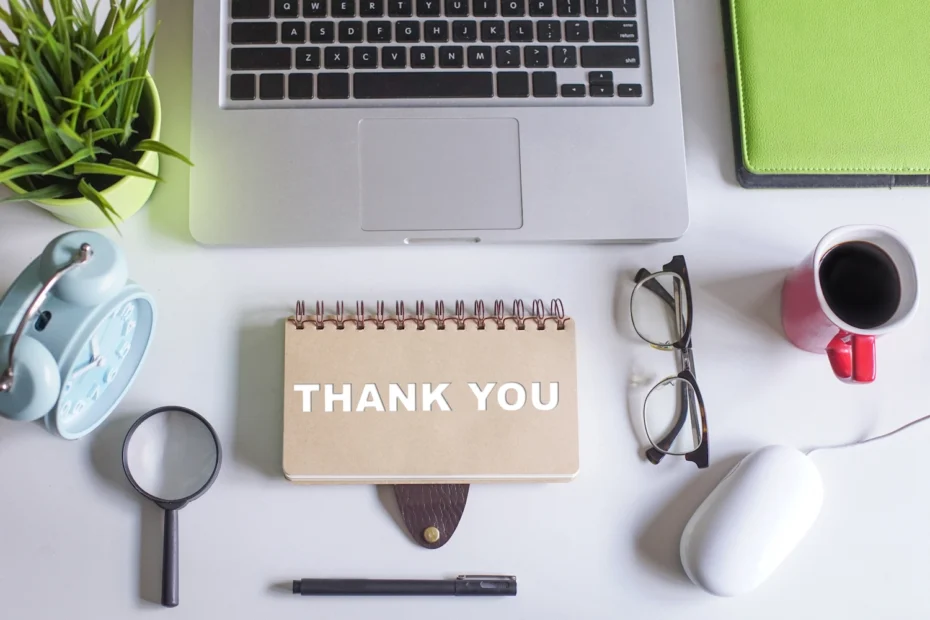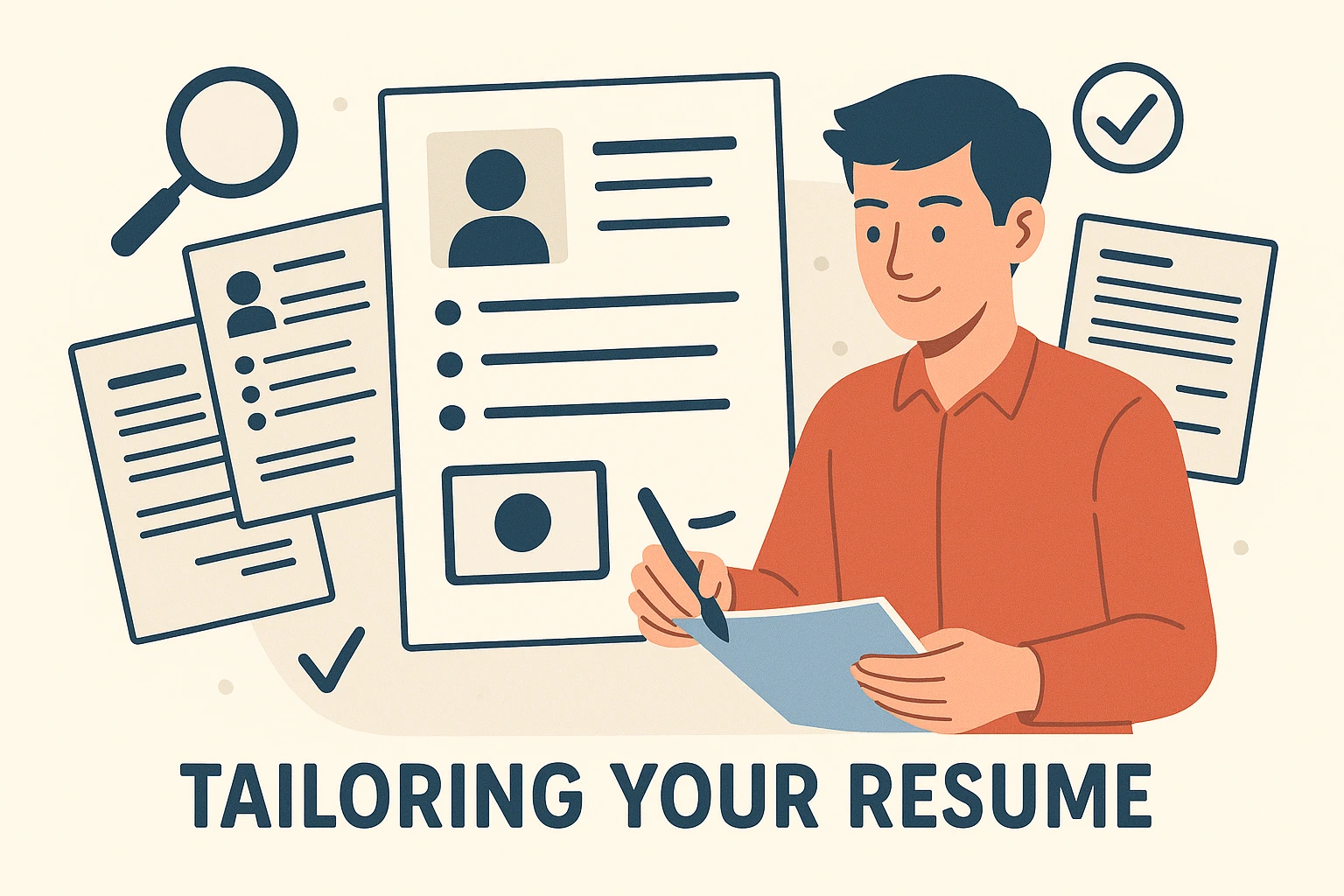1. Following Up Post-Interview: The ‘When’ and ‘How’
1.1 The Post-Interview Phase: A Critical Stage in Job Hunting
So you’ve stepped up to the plate, aced your interview, and now you’re back in the waiting room of Job Hunting and Interview Preparation. Maybe you’re feeling like Lionel Messi who’s just taken his shot and is now waiting to see if the ball hits the target. The post-interview process might feel like suspended animation, but it’s actually a critical phase requiring its own set of strategies.
1.2 The Nuances of Post-Interview Follow-up: Striking a Balance
In this guide, we delve into the finer points of following up after the interview, exploring the optimal times and modes for communication. Interview follow-up is a nuanced art; it’s about striking a balance between showing your keen interest and not crossing into the realm of being overly persistent. Just as a well-placed follow-up can tip the scales in your favor, an ill-timed one can leave a less-than-favorable impression.
1.3 Outline of Topics Discussed in the Article
But fear not, we’ll discuss it all – the when’s, the how’s, and the what’s of successful post-interview follow-ups. So, if you’re done celebrating your well-executed interview, it’s time to roll up your sleeves for the next step in the game.
2. Understanding the Importance of Post-Interview Follow-Up
2.1 Why is Post-Interview Follow-up Significant?
When it comes to Job Hunting, crossing the interview finish line is indeed an accomplishment, but the race doesn’t end there. The follow-up is akin to that final sprint which helps you differentiate yourself from the swarm of candidates who are in the same arena. Candidates often underestimate the importance of an interview follow-up, or as we like to call it, the “afterplay”. So let’s get down to brass tacks and understand why exactly is a post-interview follow-up so important.
2.2 The Value of Follow-ups: Reiterating Your Interest
One of its primary functions is to reiterate your interest in the job. Hiring managers meet dozens of applicants, so a well-placed follow-up could make you stand out in their memory. With this gesture, you non-verbally communicate just how interested you are, placing you at the forefront of their minds when the final decision is made.
2.3 Reflecting Your Soft Skills: Etiquette, Professionalism, and Communication
In the world of Interview Preparation, the post-interview follow-up is also a reflection of your workplace soft skills: business etiquette, communication, and professionalism. It’s like a virtual handshake that speaks volumes about you and leaves a lasting impression on your potential future employer.
2.4 Statistical Proof: The Consequences of Absence of Follow-up
According to a survey by CareerBuilder, 22% of employers are less likely to hire a candidate if they do not send a thank-you note after the interview. Now, that’s a clear indication of the crucial role of post-interview etiquette.
In the grand scheme of job hunting, successful follow-up represents the fine line between being a mere applicant and a serious contender. Keep this mantra in mind: the interview isn’t over till the follow-up mail is sent!
3. Determining the Right Time for Follow-Up
3.1 The Golden Rule: When to Follow Up
When is the right time to follow up post-interview? We will answer this frequently asked question in this section. The golden rule of thumb is to send a follow-up email within 24 to 48 hours of the interview. This period strikes the sweet spot between giving your interviewer enough time to evaluate you and other candidates, and showcasing your keen interest and enthusiasm for the role.
3.2 Factors Influencing the Timing
However, remember that this is a general guideline and exceptions always exist. The timing for follow-up can depend on several variables such as the industry you are in, the size of the company, the volume of applicants being processed, or even specific directions given by the interviewers. For instance, more bureaucratic industries like public sector organizations might prefer a slightly longer waiting period before follow-ups when compared to the fast-paced start-up world.
3.3 Respecting the Interviewer’s Timeline
When you step into the world of Job Hunting and Interview Preparation, it’s important to note that respecting the interviewer’s time and timeline is a key aspect of a well-timed follow-up. Always inform yourself about the approximate timeline for the hiring decision that is usually provided by the interviewer. If such a timeline has not been discussed at the interview, it’s good etiquette to ask for one towards the end of your conversation. This could guide your follow up timing and prevent you from coming off as impatient or desperate.
An optimally timed follow-up can keep your name fresh in the mind of the interviewer, all the while reflecting your proactive attitude and genuine interest in the role. Just as the player needs to choose the right moment to take the winning shot, you too need to pinpoint the perfect time to send out that follow up to hit the job offer goalpost!
4. Methods of Following Up
4.1 The Choices at Hand: Prime Modes of Follow-Up
Once you’ve determined when to send your follow-up, the next crucial question becomes ‘how’. In the modern-day ethos of Job Hunting and Interview Preparation, you have several methods available to follow up. The choice of method should ideally be guided by the job industry, the company culture, and sometimes, specific instructions given by the interviewer. Let’s delve into some of the most commonly used follow-up methods and their best-use scenarios.
4.2 Email Follow-ups: A Preferred Choice
In most scenarios, an email is the best mode of following up. It is swift, professional, and leaves a digital paper-trail. It’s non-intrusive and gives the recipient the liberty to respond at their convenience. Crafting an effective follow-up email requires you to be thoughtful, concise, and professional. Make sure you express your gratitude for the opportunity, affirm your interest in the position, recap the key points from your interview, and inquire about the next steps. An email follow-up can be your virtual ‘thank you note’, which doubles up as a gentle reminder of your potent candidature.
4.3 Phone Call Follow-ups: Treading with Caution
Phone calls can also be an effective method to follow up after an interview, though the instances where this is the preferred mode are fewer. It might be appropriate if you have established a good connection with the hiring manager during the interview or if the company culture leans towards more personal forms of communication. Remember, phone calls require the recipient to respond on the spot, so ensure you’re making the call at a suitable time and keep the conversation brief and respectful.
4.4 Postal Mail Follow-ups: The Classic Way
The traditional method of sending a follow-up via postal mail or courier, such as a handwritten note, still has its charm and can stand out in certain scenarios. This method might be much appreciated in industries that value traditional forms of communication or in small companies where hiring decisions are more personal. However, keep in mind the delay in delivery time, making it a less suitable option when a quick follow-up is the norm.
In summary, the follow-up method should mirror the company’s communication style and reflect your adaptability to it. Choose wisely because this could be the final interaction that cements your impression before the hiring decision is made.
5. Content of the Follow-Up Message
5.1 Expressing Interest and Gratitude
Whether you choose to follow-up with an email or a phone call, a well-crafted message is paramount. Start off on the right note by expressing your appreciation for the interview opportunity. Not only does this convey your professional etiquette, but also affirms your continued interest in the role.
5.2 Personalization Through References
Next, give your message a dash of personalization. Recollect a unique moment or a noteworthy conversation from the interview and weave it into your message. Your ability to connect this instance to your suitability for the role or alignment with the company’s values can make a memorable impression.
5.3 Address Any Lingering Doubts or Questions
In the landscape of Job Hunting and Interview Preparation, a follow-up message is an opportunity to address any aspects of your candidature you feel were not adequately addressed during the interview. Perhaps there was a question you wish you had answered differently or a skill you failed to mention – your follow-up message is your stage to set things right.
5.4 Inquiry About Next Steps
End your follow-up message with an inquiry about the next steps in the process. This showcases your eagerness to move forward, without applying undue pressure on the respondent.
6. Handling the Wait After Follow-Up
6.1 Crush Your Anxiety with Resilience
The period post follow-up can be a nail-biting stretch filled with anticipation. But the key to acing this phase, as with the entire process of Job Hunting, is resilience. Do not let the wait get the better of your nerves. Understand that with many candidates to evaluate, the decision-making process might take longer than anticipated.
6.2 Pursue Other Job Opportunities
While waiting, continue to apply and interview for other opportunities. The job market is unpredictable, and while you might have a strong preference for this particular role, having other options underway will not only keep you productively engaged, but also place you in a more secure position.
6.3 Reflect On Your Progress
Lastly, use this time for reflection and self-improvement. Look back at your interview performance – what did you do well, and what could you have done better? This introspection will go a long way in shaping your future Interview Preparation strategies.
Remember, in the course of Job Hunting, sometimes the waiting game can feel the hardest. But with the right mindset and continuous effort, you can turn this period into a productive and insightful one.
7. Unresponsive Interviewers: How to Proceed?
7.1 Reading the Silence: Interpreting an Absence of Response
There might be circumstances when, despite a professionally timed and articulated follow-up, you don’t hear back from the interviewer. First things first, don’t panic. While it can be disheartening to face silence from the other end, various factors could contribute to this including unforeseen delays in the decision-making process, or possibly, a change in the hiring needs of the company.
7.2 Deciding Your Next Course of Action
If an extended period has passed without any response, giving a gentle nudge with another follow-up might be acceptable. It’s a good idea to reinforce your interest in the role and politely inquire about any updates.
7.3 Recognizing When to Move On
However, there comes a point when it’s best to move forward. If your repeated attempts at contact go unresponded, treat it as a closed chapter and redirect your Job Hunting efforts elsewhere. Remember, job hunting is about finding the right fit and you deserve an opportunity where your keen interest and effort are reciprocated.
8. Key Takeaways
- Timely Follow-ups: Sending a follow-up within 24 to 48 hours of the interview keeps your name fresh in the interviewer’s mind.
- Choose the Right Method: Be it email, a phone call, or a handwritten note, let the follow-up method reflect the company’s communication culture.
- Well-Crafted Message: A personalized message that harps on unique aspects of your interview and reiterates your suitability for the role can leave a lasting impression.
- Resilience During the Wait: Waiting after the follow-up can be nerve-racking, but use this time for positive reflection and continuous job search.
- Dealing with Silence: If silence follows your follow-up, know when to send another follow-up and when to move on.
Remember, in the realm of Job Hunting and Interview Preparation, each step – right from crafting your resume to sending a post-interview follow-up – is a vital cog in the wheel that steers your way towards your dream job. With these insights into the ‘when’ and ‘how’ of following up post-interview, you’re all set to ace this phase of your job hunting expedition!


